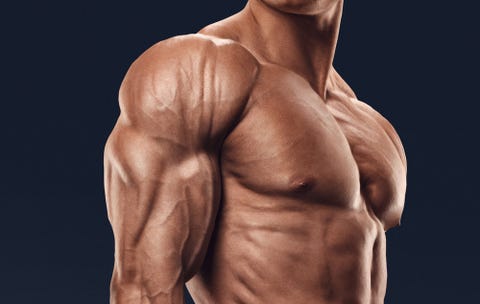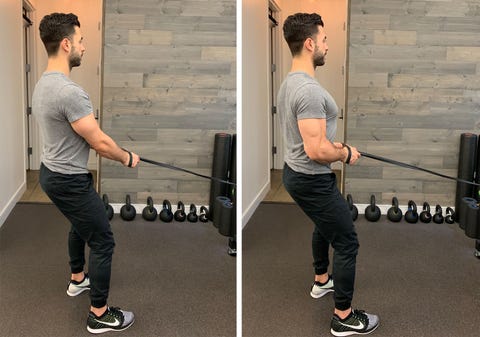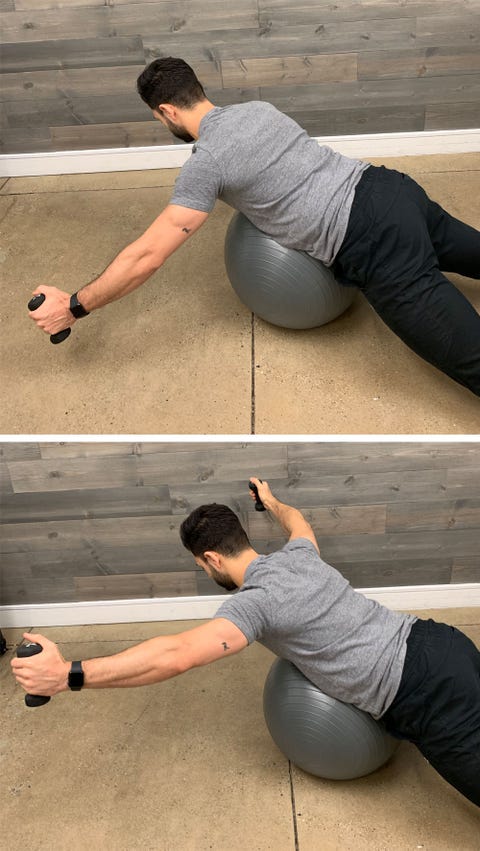

Imagine Batman without Robin, Tom without Jerry, and Key without Peele. It just can’t work, right?
That’s a lot like the relationship your shoulder has with your shoulder blade. Sure, the shoulder gets all the attention, and major mounds of dealt muscle just may be one of your focuses in the gym. But none of that can happen without the shoulder blade. Also known as the scapula, it attaches to a host of muscles that help stabilize the shoulder joint, and healthy scapular function is critical to healthy shoulders.
Unhealthy scapular function is often the cause of shoulder pain, which can alter our lifts and even force us to take time off. In the gym, most of us want to make muscle and strength gains and we do so by increasing our volume and intensity with our lifts. But often, we start making those gains, then feel pain, which causes us to alter our exercises, or even forces us to take time off. You can avoid such injury-related setbacks by taking the time to create a more durable shoulder complex — and that starts with scapular health.
The Magic Blade

Shutterstock
Understanding the relationship between the scapula and shoulder is critical. The scapula sits on your back, on the outside of the ribcage and is attached to the body by a host of different ligaments and muscles. Perhaps the most important muscle group that attaches to the shoulder blade is the rotator cuff, which is made up of four tendons: the supraspinatus, infraspinatus, subscapularis, and teres minor.
All four rotator cuff tendons come together to stabilize the humerus, the bone in your upper arm that runs from shoulder to elbow. The rotator cuff rotate the shoulder and assist in just about every shoulder movement you can think of, from shifting your arm away from your body (abduction) to elevating your arm out in front of you.
Several other critical muscles also attach to the scapula, including your traps, your rhomboids (the thick muscles running down the middle of your back), and your levator scapulae. Your serratus anterior also plays a key role, especially in overhead lifting. All these muscles create shoulder joint stability and efficient movement of the shoulder.
Without those muscles and tendons working with the scapula to stabilize your shoulder, you’d be more prone to injure the joint with overhead lifting or overhead throwing. When you lift a weight overhead, the scapula is rotated upward and outward on your rib cage so that the surrounding muscles can work to move and stabilize the shoulder joint.
When you’re training heavy, things get more serious. As you increase volume and intensity, your shoulder requires more scapular stability in order to make gains while staying healthy. If there is a lack in scapula stability, other muscles will take the brunt of the load, which may lead to damage of shoulder, or pinching of the rotator cuff tendons or the labrum (known as impingement).
Your Scapular Stabilizer Workout
Build strong, durable scapular stabilizers, though, and your shoulder becomes less-injury prone — and more capable of moving the big weights you want. That’s why you should include some scapular stabilization work in all your training. You don’t need to spend hours training them; just do these three motions as a warmup before every workout.
Focus on form for these, instead of trying to move massive weight, and always keep it light. Aim for 3 sets of 12 to 15 reps for each move for strength endurance 2 to 3 times per week. Do this for 4 to 6 weeks. During one workout each week, focus on the eccentric (or negative) aspect of each exercise, lowering the resistance slowly and with control to help build tendon strength.
Scapular Retraction with Band

Dan Giordano
Start in athletic stance with feet shoulder-width apart, holding a resistance band set up in front of you. Retract your shoulder blades; pretend a friend has a finger in your middle back and you’re trying to squeeze it. Then depress your shoulder blades. Pull your hands toward your stomach, then pause and return to the start. That’s 1 rep.
Resisted Wall Slide

Dan Giordano
Start in athletic stance with feet shoulder-width apart, elbows on a wall. Your core should be tight, and your elbows should be at shoulder-height, leaning against the wall. A band should be around your wrists, which are also against the wall. Push your elbows against the wall and push your chest away, protracting your shoulder blades. Hold this position as you move one elbow out to the side, pause then return to the start. Repeat on the other side. That’s 1 rep.
Prone Stability Ball Y

Dan Giordano
Lie on a stability ball (with your knees on the ground so you’re not fighting to maintain core stability; that’s not your focus here). Hold light dumbbells in your hands and squeeze your shoulder blades. Raise your arms so they form a “Y” with your torso. Pause when they’re in line with your torso, then lower to the ground. That’s 1 rep.
Source: Read Full Article